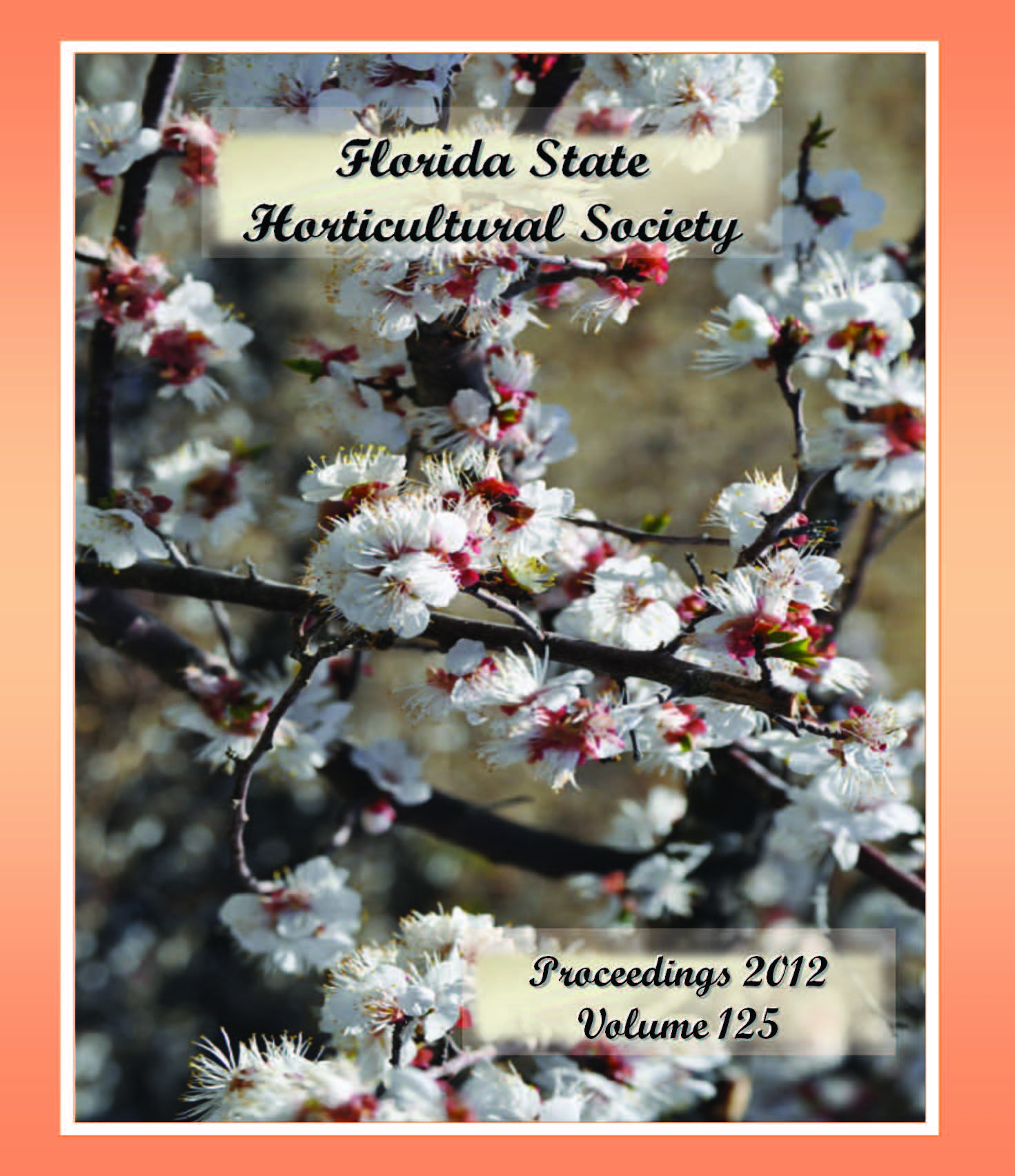Effect of Nutritional Spray Regimes on Orange Juice Flavor Quality and Juice Liberibacter (CLas) DNA Detection
Published 2012-12-01
Keywords
- Citrus sinensus,
- CandidatusLiberibacter asiaticus,
- Huanglongbing,
- citrus greening,
- sensory
Abstract
Huanglongbing (HLB) has been spreading statewide in Florida. Removal of infected trees is the most effective way to control spread of the disease. However, under the current decreasing production trend (annual production is down from 220 million boxes before the attempt at canker eradication and two severe hurricane seasons in 2004 and 2005 to currently less than 140 million boxes) it is difficult to remove more trees for any reason. Thus, many growers have set up their management strategy on two major practices: reducing psyllid populations with insecticides, and applying a nutritional spray program to alleviate HLB tree symptoms. As a result, more and more fruit for juice extraction will be HLB infected. Orange juice, processed from symptomatic HLB-infected fruit, has been associated with bitter taste and/or off-flavor. However, there is no single indicator that can be used to predict quality loss of juice due to HLB. Furthermore, it is unknown how nutritional sprays influence fruit and juice flavor. The objectives of this research are to determine how quantitative real-time PCR (qPCR), one of the most reliable HLB diagnostic methods, can be adapted to detect the HLB supposed pathogen DNA in juice, and then how nutritional spray regimes influence juice quality and qPCR results. ‘Hamlin’ and ‘Valencia’ orange trees with or without HLB infection were sprayed with three different nutritional formulations. The fruit were harvested and processed using a commercial juicer. The samples were analyzed for sugars, acids, limonoids, and volatiles, and evaluated by sensory panels for the aroma and taste, and qPCR for the pathogen bacterial population. The results showed that juice processed from symptomatic HLB fruit contained more of the bitter compounds, limonin and nomilin, and was perceived by the panel as bitter, astringent, grapefruit-like, sour, metallic, earthy, or simply “flat.” The pathogen population detected by qPCR was lowest in control (healthy) fruit juice and highest in HLB symptomatic fruit juice. Juice processed from HLB asymptomatic fruit had less off flavor and lower pathogen population than did juice from HLB symptomatic fruit. Fruit grown under the nutritional spray programs had similar off flavor problems in ‘Hamlin’ juice, but resulted in sweeter juice for ‘Valencia’. The nutritional treatments did not consistently result in less pathogen DNA for either variety, however.

